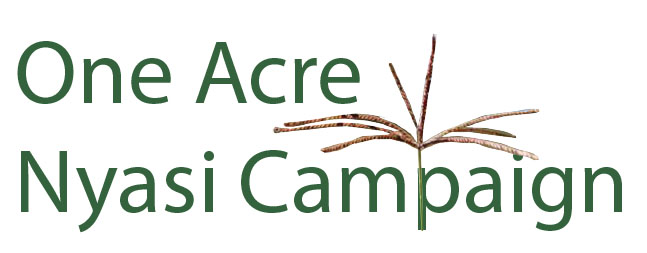
By George P. Munene
Founded in 2019, the One Acre Nyasi Campaign aims to sensitize livestock keepers, especially in arid and semi-arid regions, on the importance of pasture production as well as offering them skills and tools, previously unavailable to small-scale farmers, that help them harvest, bale and store fodder to serve as feed in times of drought as well as offering them a supplementary income.
The program that has onboarded over 800 farmers thus far offers consultancy services (on the variety of grasses suited to various regions, the best agronomic and post-harvest practices) usually over Whatsapp. This Andrew says owes to the fact that most operate one- or two-acre parcels of land making it economically infeasible to reach every one of them.
Consultancy services are charged at Sh2,000 but offered for free to farmers who purchase propagation material (seeds or planting material) as well as variously fabricated fodder harvesting tools, ie, hay balers and mowers.
“Our unique equipment is purpose-made to cater to farmers with less than five acres of land. These are a mower fitted with a one-meter blade imported from South Africa and a wheelbarrow style-driven hay baler,” says Andrew Koriata, the program’s lead in explaining its genesis. These machines cost Sh 4500 and Sh9000 respectively and are available at Kenya Farmers Association outlets.
Related News: Super Napier grass yielding 4X regular varieties introduced in Kenya
Related News: Accountant earns double from dairy and hay production after quitting job
“The devastation wrought by severe droughts in 2008 and 2011 in scores of livestock deaths made clear the inadequacies in fodder management knowledge for smallholder livestock keepers. This presented a clearly underserved agricultural segment,” Andrew says.
The One Acre Nyasi Campaign has majored in the production of two major grasses; brachiaria and Rhodes. This is because they are both high in crude protein, highly palatable, have vigorous regrowth and most important unlike other fodders such as Napier, can be made into bales.
Rhodes grass seeds cost Sh500 per kilogram with six kilograms required to sow an acre. Brachiaria is grown in splits which cost Sh6 for every split and three thousand splits are enough to cater to an acre. This too presents another earning opportunity to farmers who are often called upon to service farmers who are near them with these propagation materials.
“For farmers we have worked with we have seen improved outcomes in their preparedness to weather harsh climatic times by having enough pasture to tide them over until the rains are available as well as having surplus pasture that we help them source for buyers for through our extensive network of farmers,” Koriata says.
Related News: Brachiaria grass rescues farmer's cow from drought
Consultancy is a crucial first step in fodder propagation; while brachiaria grass has had a transformative impact in livestock keeping, most farmers for example remain unaware of the fact that different varieties of the grass are suited to different ecological localities: Mulato II is less drought-tolerant while other such as Toledo, Basilisk & MG 5 are hardier and still thrive in arid regions. “Of a picture of lush green foliage off the internet you will often find a farmer having grown Mulato brachiaria in a hot dry area and wondering why it performs poorly,” he illuminates, “these are some of the pitfalls we help farmers avoid.”
One Acre Nyasi Campaign:http://www.oneacre.qiksearch.africa/ (0720507555)